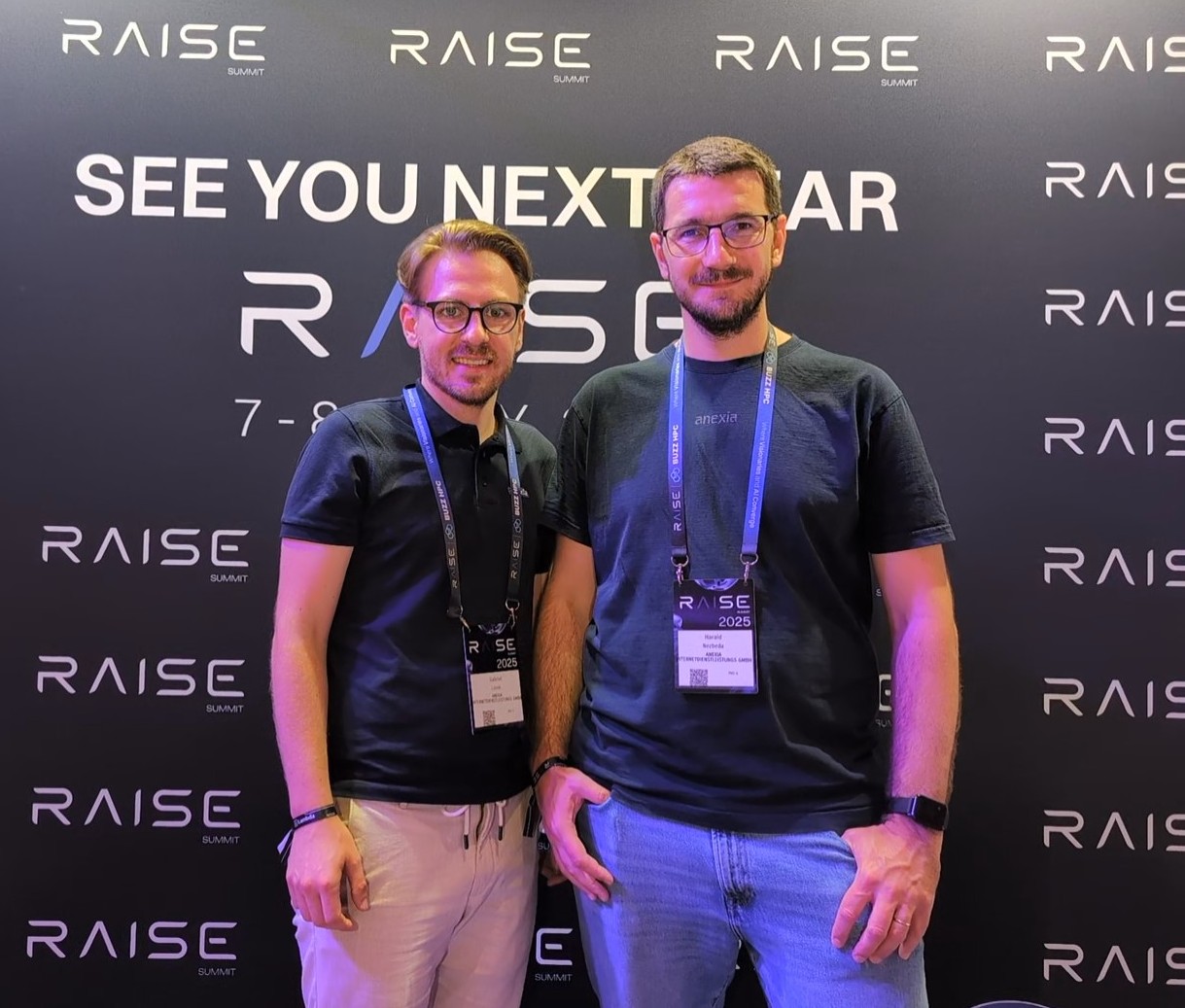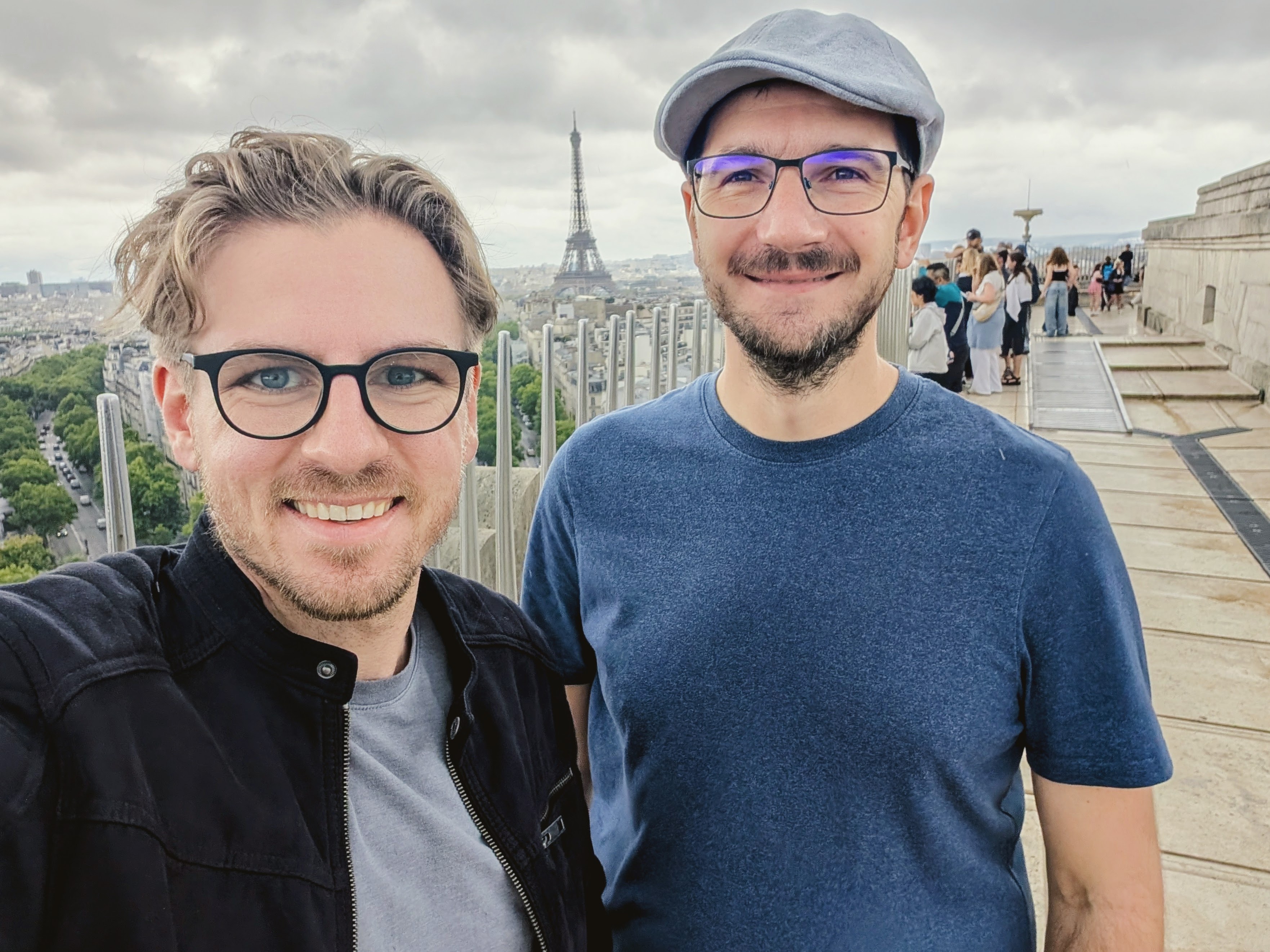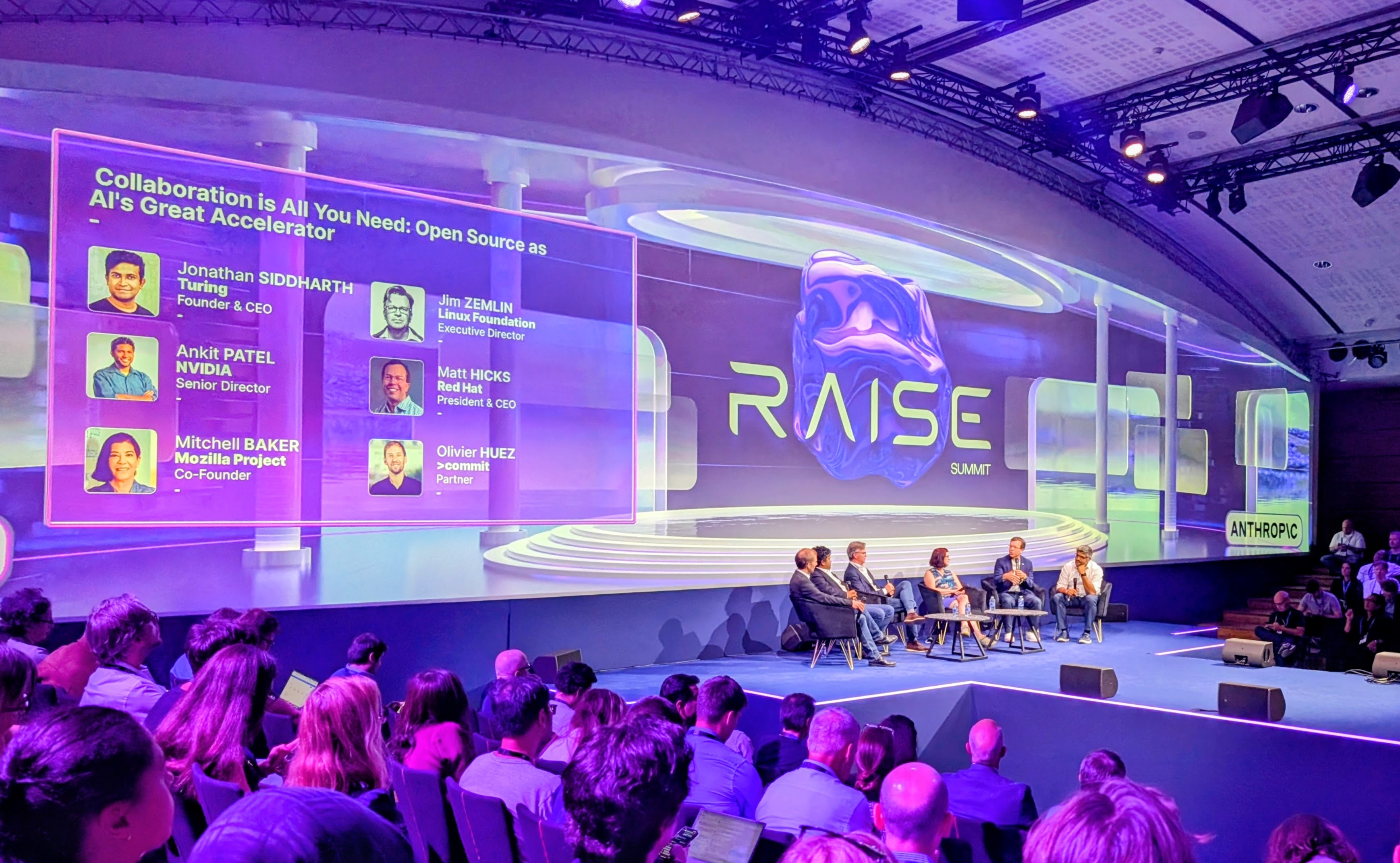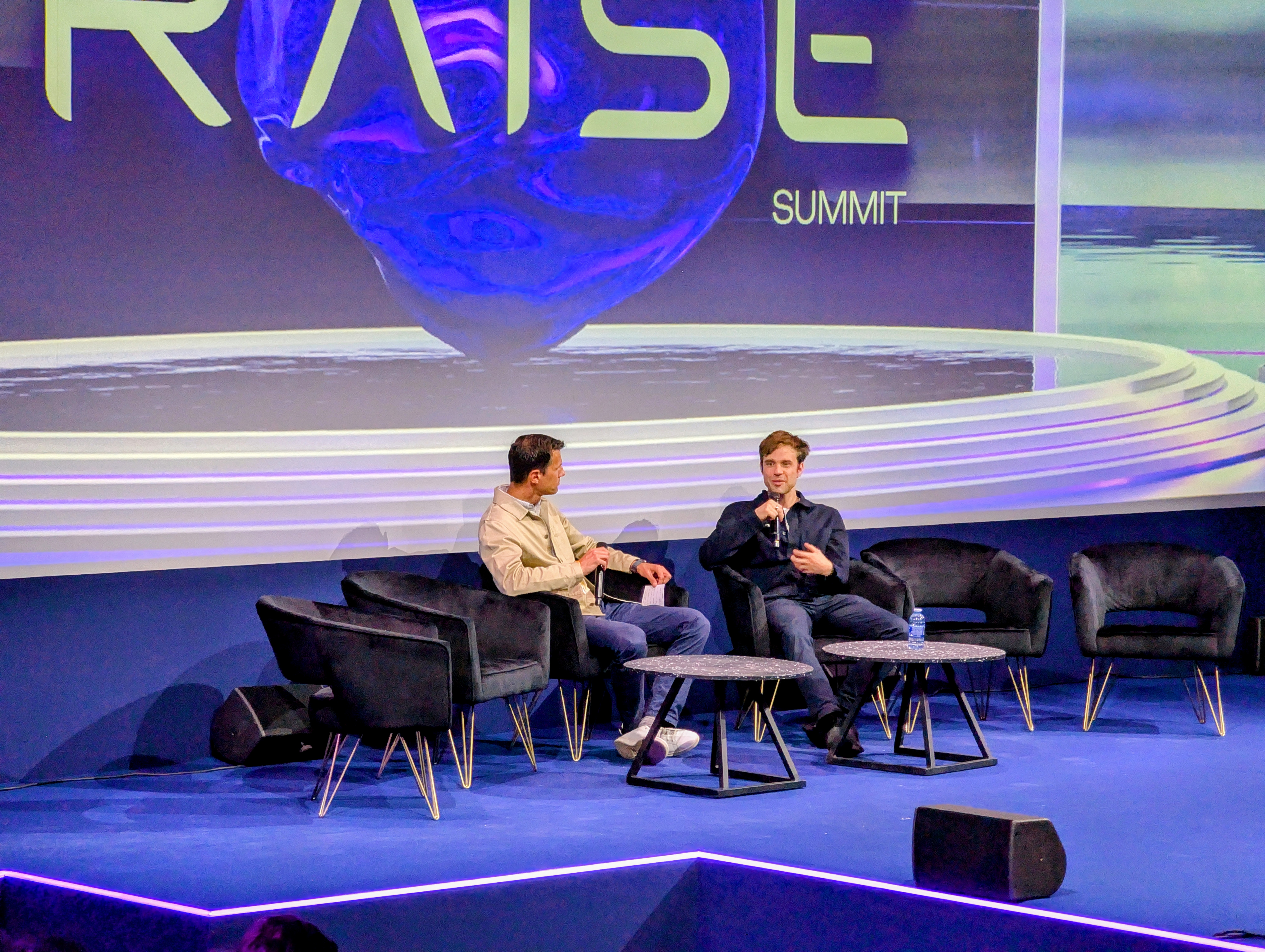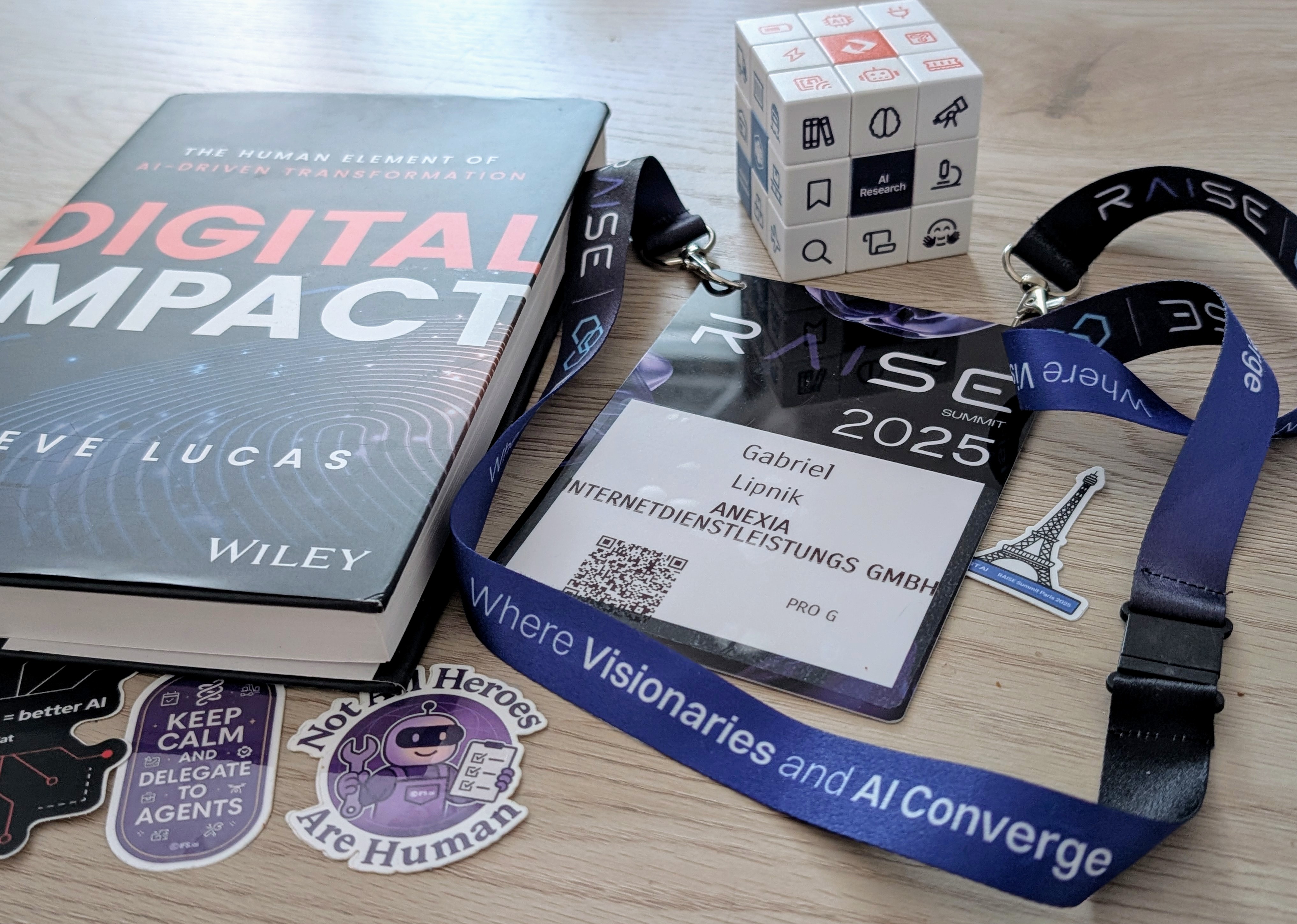RAISE 2025: Between AI Sovereignty, Super Agents and Sweet Macarons in Paris
In July, I had the wonderful opportunity to attend the RAISE Summit 2025 in Paris together with my colleague Harald Nezbeda, thanks to the generous support of Anexia. The event took place at the Carrousel du Louvre and brought together over 6,500 attendees from across the AI world under the motto “Where visionaries and AI converge.”
The conference offered not only high-quality sessions with leading speakers but also engaging discussions about tools, trends and challenges on the path towards trustworthy and scalable AI. And yes, between talks about sovereignty, governance and agents, there was still time for fascinating conversations, a quick espresso and, of course, a few macarons! 🇫🇷
First Impressions: Travel and Sightseeing
We started our journey in the early morning at Klagenfurt Airport, rainy and slightly delayed, but full of anticipation. Once in Paris, we had a bit of time to explore the city: The Arc de Triomphe is definitely worth a visit. After a brief stop at the impressive Louvre Museum (yes, we have seen the Mona Lisa!) and a small adventure using public transport (Tip: install the IDF Mobilités app beforehand!), we arrived at the conference venue.
The Carrousel du Louvre, located right next to the museum, proved to be an excellent venue. The organisation was well handled: QR codes on badges, session entry tracking, well-structured tracks and a large expo area featuring partners and sponsors. Orientation was a bit tricky at first (until we found the venue map!). Also, with so many sessions happening in parallel, we had to skip a few to make time for conversations with company reps and fellow attendees. With a bit of planning, though, we managed to get the best of both worlds: meaningful networking and lots of great content.
Topics & Highlights
Here’s a brief overview of the most interesting and relevant topics from my perspective.
AI Sovereignty & Governance
AI sovereignty was one of the main themes. Europe’s ambition to reduce its reliance on US infrastructure goes beyond privacy and data protection, it’s also about cultural values and strategic autonomy. True sovereignty doesn’t stop at hardware or software (think licensing and VMware); it must also include the principles embedded within our models (see also Grok). Nonetheless, sovereign infrastructure remains essential. Without European-run data centres, independent processing, and trustworthy platforms, the idea of AI sovereignty remains superficial.
Agentic AI – From Tool to Teammate
AI agents are software systems that perform tasks independently using AI. They’ve developed rapidly, from simple automation to complex, context-aware workflows including planning and tool usage. In the workshop “Agentic Pipelines orchestrating open source LLMs” by Dylan Bristot, we saw how open-source models can be orchestrated and connected to tools like Google Sheets or Nextcloud. New interfaces are replacing classic GUIs – you define the goal, and the agent takes care of the rest. For me, this was a small but meaningful insight into what’s possible.
Open Source as an Accelerator for Trustworthy AI
One of the key takeaways, or rather confirmations, from the summit: Open source is not just about code. It’s a mindset. The success of ChatGPT triggered a wave of open-source alternatives (like Llama), which in turn helped accelerate even closed-source progress. A virtuous cycle that benefits the whole field.
Speakers like Jim Zemlin, Matt Hicks and Mitchell Baker made it clear: successful open-source projects aren’t just supported by a community – they are the community. Anyone hoping to earn trust or build a business on open source must be transparent from the start, choose the right licence, and honour a kind of moral contract with contributors and users.
Graph Technologies – A Game Changer?
Graph databases, such as Neo4j, are uniquely designed to represent not just data points but the relationships between them, be it connections between entities, model components, or decision paths. This relational mapping is what makes graph technology so powerful in AI governance and explainability.
Graph technologies provide the structural foundation necessary to build AI systems that are transparent, auditable, and aligned with regulatory expectations, not just performant. This could open the door to better traceability, more interpretable models, and better regulatory alignment, e.g., with the EU AI Act. I’m really curious to see how this will evolve!
Lovable
One personal highlight was the fireside chat with Anton Osika, CEO & Founder of Lovable. He explained how asynchronous coding agents manage hundreds of tasks in parallel VMs, fully integrated with tools like GitHub and Notion. Lovable’s growth pace is impressive. But what really stuck with me was the philosophy: Teams that solve real problems matter more than technical uniqueness. I’ll definitely give Lovable a try soon!
Conclusion
So what’s left? We’re coming back from an event that served as a checkpoint, a future outlook, and a reality check all at once. We’re full of new ideas, clearer on strategic trends, and more motivated than ever to help build trustworthy AI. Thanks again to Anexia for the opportunity and to Harald for the inspiring conversations between croissants and rain!
✨ Bonus: Check out Harald’s recap: My Experience at RAISE Summit 2025: AI Insights from Paris
*Please do not hesitate to send me an email if you have any comments regarding this blog post! Note that the English and the German versions of this post may differ slightly. However, you can be sure that the content is the same.
Recent Posts
- RAISE 2025: Between AI Sovereignty, Super Agents and Sweet Macarons in Paris (26-07-2025)
- Promotio sub Auspiciis and Ring Ceremony with the Federal President of Austria (20-03-2024)
- Research Stay @ Nancy, France (29-09-2022)
- Summer School @ Park City, USA (20-08-2022)
- Research Stay @ Nancy, France (15-03-2022)
- Talk @ Probability and Combinatorics Seminar in Uppsala (09-12-2021)
- (Nearly) Perfect Secret Santa (03-12-2021)
- On a Special Kind of Prime Numbers (31-03-2021)
